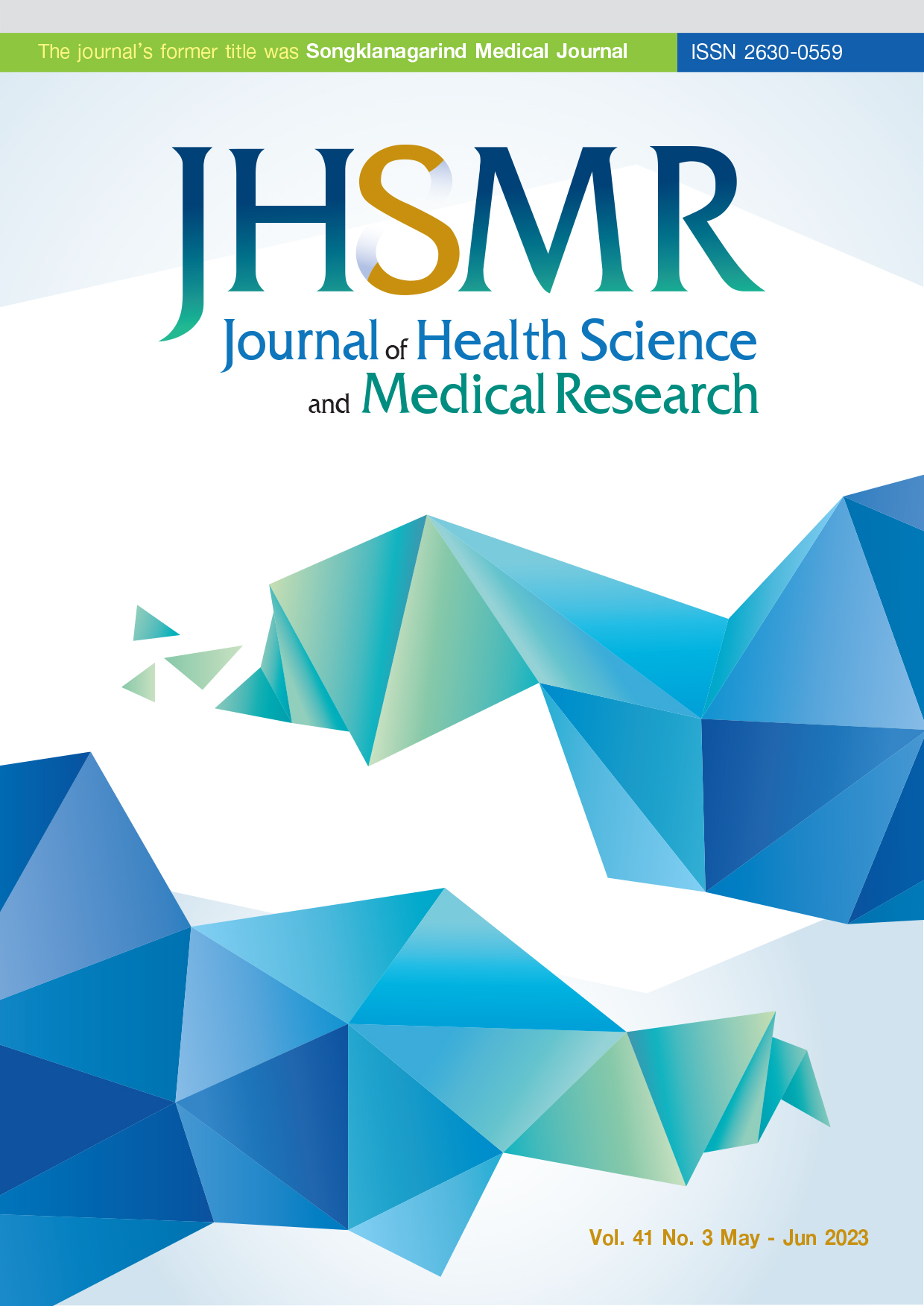Epidermolytic Ichthyosis Sine Epidermolysis–A Case Report and Molecular Analysis
DOI:
https://doi.org/10.31584/jhsmr.2022914Keywords:
bullous congenital ichthyosiform erythroderma, epidermolytic hyperkeratosis, epidermolytic ichthyosis, KRT10, p.Arg156HisAbstract
Epidermolytic ichthyosis (EI) is a rare genodermatosis disorder. We report a 39-year-old woman with EI, who presented with generalized erythroderma since birth, followed by generalized hyperkeratosis later in life. The physical examination revealed generalized hyperkeratosis without blistering or erosion. The histopathological studies revealed hyperkeratosis with parakeratosis and psoriasiform hyperplasia, without significant epidermolysis. The Sanger sequencing revealed a missense mutation—c.467G>A (p.Arg156His)—in the KRT10 gene, confirming the diagnosis of EI. The genotype-phenotype correlations in EI patients are multifactorial. Thus, molecular analysis can confirm the diagnosis in cases of an unclear medical history or histological inconclusiveness.
References
Bolognia JL, Schaffer JV, Cerroni L. Dermatology. 4th ed. Amsterdam: Elsevier; 2018.
Ross R, DiGiovanna JJ, Capaldi L, Argenyi Z, Fleckman P, Robinson-Bostom L. Histopathologic characterization of epidermolytic hyperkeratosis: a systematic review of histology from the National Registry for Ichthyosis and Related Skin Disorders. J Am Acad Dermatol 2008;59:86-90.
Rout DP, Nair A, Gupta A, Kumar P. Epidermolytic hyper keratosis: clinical update. Clin Cosmet Investig Dermatol 2019; 12:333-44.
Hayashida MT, Mitsui GL, Reis NI, Fantinato G, Jordão Neto D, Mercante AM. Epidermolytic hyperkeratosis-case report. An Bras Dermatol 2015;90:888-91.
Eskin-Schwartz M, Drozhdina M, Sarig O, Gat A, Jackman T, Isakov O, et al. Epidermolytic ichthyosis sine epidermolysis. Am J Dermatopathol 2017;39:440-4.
Li Z, Liu Q, Wang A, Wang H, Li C. Mutation p.R156H of KRT10 responsible for severe phenotype of epidermolytic ichthyosis in a Chinese family. Ther Clin Risk Manag 2014;10:713-5.
Syder AJ, Yu QC, Paller AS, Giudice G, Pearson R, Fuchs E. Genetic mutations in the K1 and K10 genes of patients with epidermolytic hyperkeratosis. Correlation between location and disease severity. J Clin Invest 1994;93:1533-42.
Virtanen M, Vahlquist A, Smith SK, Gedde-Dahl Jr T, Bowden PE. Splice site and deletion mutations in keratin (KRT1 and KRT10) genes: unusual phenotypic alterations in Scandinavian patients with epidermolytic hyperkeratosis. J Invest Dermatol 2003;121:1013-20.
Sun X, Ma L, Xie Y, Zhu X. Keratin 1 and keratin 10 mutations causing epidermolytic hyperkeratosis in Chinese patients. J Dermatol Sci 2002;29:195-200.
Arin MJ, Oji V, Emmert S, Hausser I, Traupe H, Krieg T, et al. Expanding the keratin mutation database: novel and recurrent mutations and genotype-phenotype correlations in 28 patients with epidermolytic ichthyosis. Br J Dermatol 2011;164:442-7.
Downloads
Published
How to Cite
Issue
Section
License

This work is licensed under a Creative Commons Attribution-NonCommercial-NoDerivatives 4.0 International License.
























